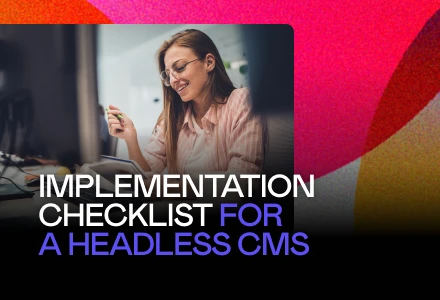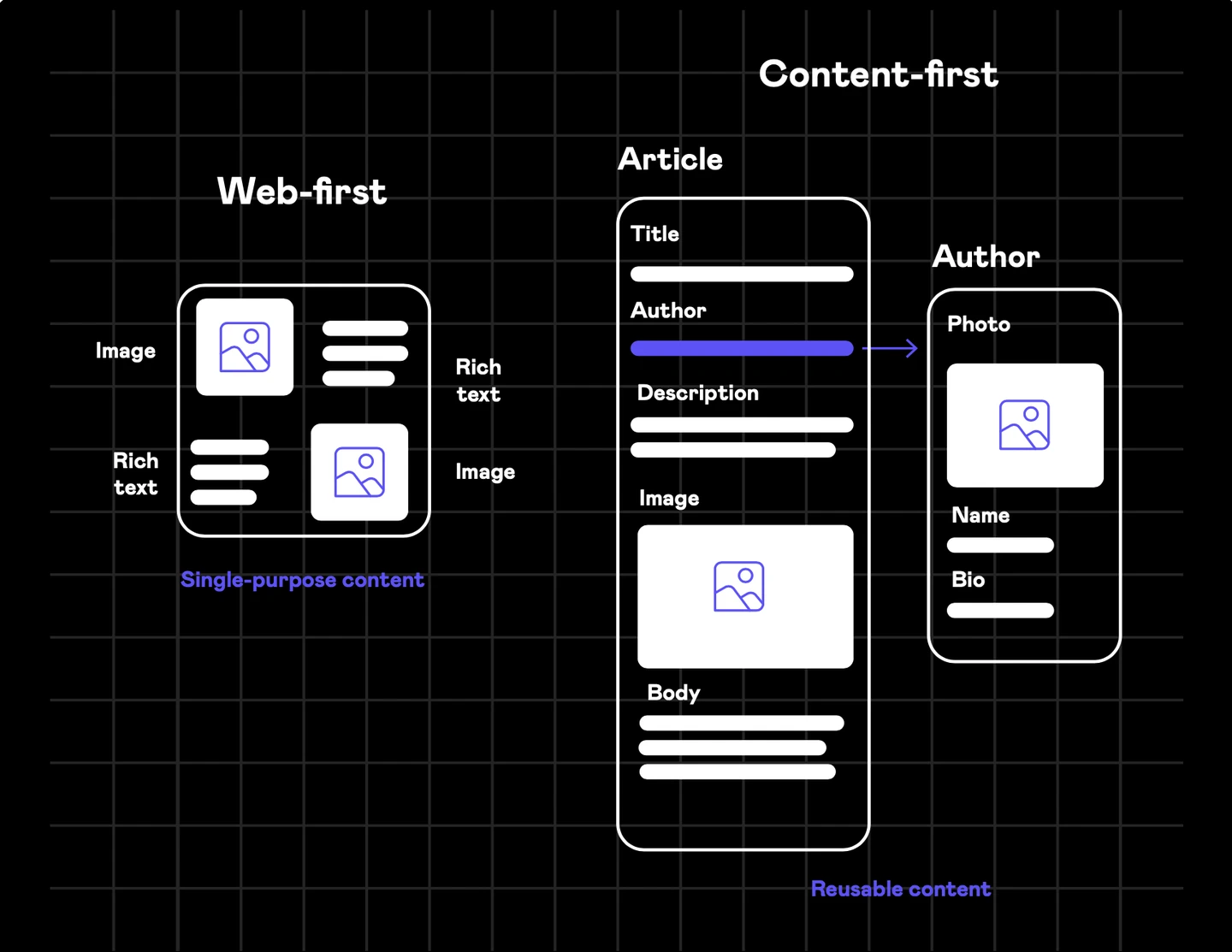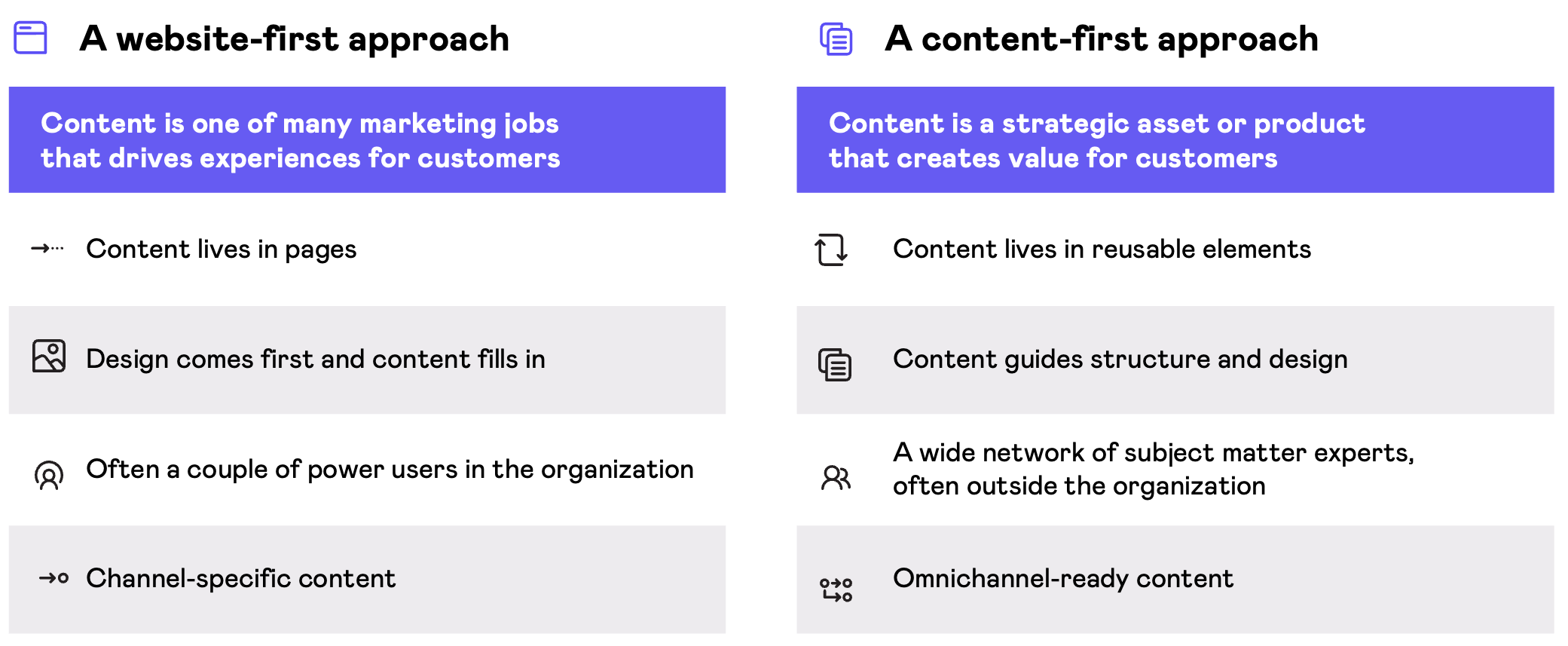
The implementation checklist for a headless CMS
Customer Success Team
Everyone these days hears that content should come first. But what does “content-first” actually mean? And how is it different from traditional, web-first thinking? To unpack this, we asked people from different departments to share their unique perspectives. Let’s explore the difference—and why the shift matters more than ever.
A content-first approach prioritizes the planning, creation, and structure of content independently from how or where it will be displayed.
In the age of AI, that structure is essential. AI tools need clean, consistent content to do their job, whether that’s helping you automate tasks, personalize messages, or get content in front of the right people. Without structure, AI is just guessing. With it, you get faster and more effective results.
Next, we’ll compare these approaches in more detail—and hear from teams across Kontent.ai on what content-first means in practice.

The web-first model is what many teams have historically followed—usually without realizing it. It goes something like this:
In many organizations, content is treated as a secondary concern—something that’s created after the design is finalized or the page template is built.
The table below contrasts the traditional website-first mindset with a modern content-first strategy.

A content-first approach turns the traditional process on its head. Instead of thinking about pages or screens, you begin by thinking about people and purpose.
Ask yourself:
“Content-first means thinking about content and its creation as just the beginning.”
Rather than treating content as a static artifact, product-oriented teams see it as a strategic asset that supports ongoing development, messaging, and user experience.
“It’s about thinking how you can get the value out of content, where it can be used and reused… how it can be incorporated into something bigger and broader.”
This mindset supports agile product cycles, where content can evolve, scale, and adapt over time—without always starting from scratch.
“You might actually have great content, but if it’s not the priority, if there’s no strategy behind how you create it, optimize it, and distribute it—it’s never going to reach the audience it deserves.”
A content-first approach is about intention. Your strategy must ensure that every piece of content:
“It does require content contributors to be very mindful about not creating content that audiences don’t actually need.”
Every piece of content should exist for a reason and be made with the audience’s needs in mind. When every piece is created with intention, it becomes a main driver of value.
“The more times a specific part can fulfill a need, the more valuable that part is.”
Customer success teams see content-first as a way to future-proof operations and reduce complexity across the entire content operations.
In industries where content is the product—like healthcare, insurance, and enterprise platforms—structure brings control and clarity. A structured, content-first approach enables teams to avoid duplication, reduce maintenance, and unlock emerging capabilities like AI.
“When content is treated as a strategic asset—not just a deliverable—it becomes scalable, discoverable, and ready for whatever comes next.”
In education, clarity is everything. A content-first approach treats each piece of information—titles, authors, body copy, metadata—as modular building blocks. “You treat these pieces of information as the building blocks of your content… you combine them together to create your content.”
This approach enables smarter reuse. Once created, a piece of content can appear across platforms without being reworked every time. Developers handle display logic. Designers shape the experience. And the content team ensures that your content stays accurate and relevant—wherever it shows up.
Understanding the difference is just the beginning. So—what now?
If you’re recognizing the limitations of a web-first approach, the good news is you don’t have to overhaul everything overnight. Small shifts in how you plan, create, and manage content can lead to major improvements in scale, clarity, and impact.
Here’s how you can start moving toward a content-first model—one step at a time:

Customer Success Team

Kontent.ai Team
Ready to rethink how you create, manage, and deliver content? Let’s explore how a content-first approach with Kontent.ai can transform your digital experiences.